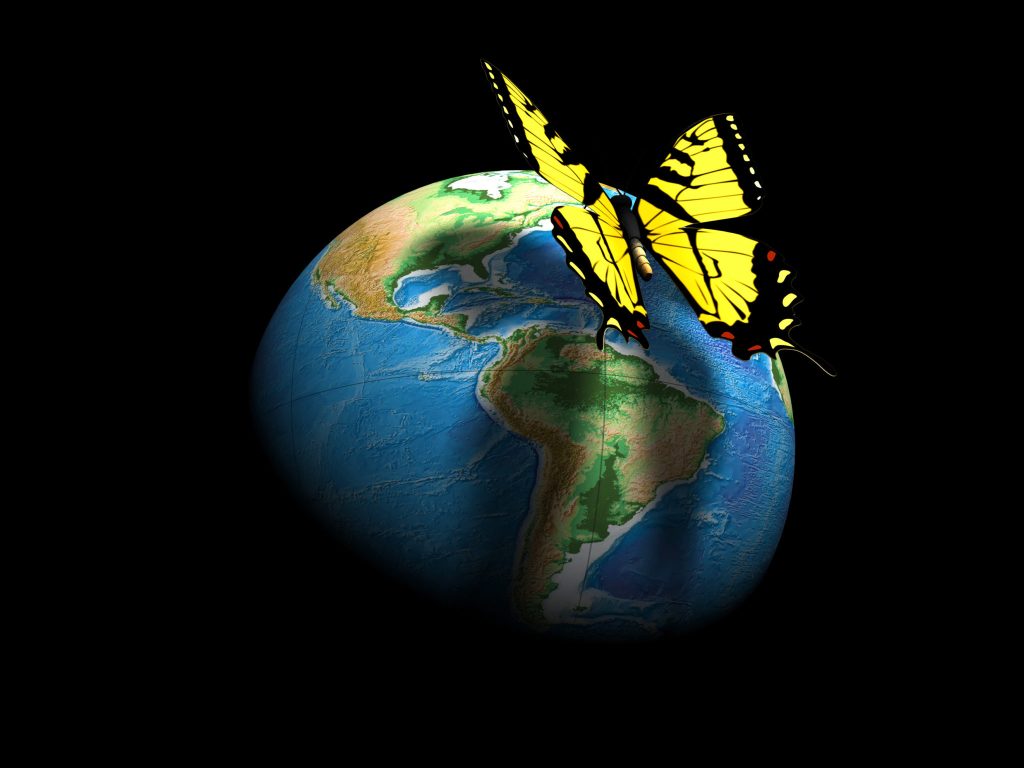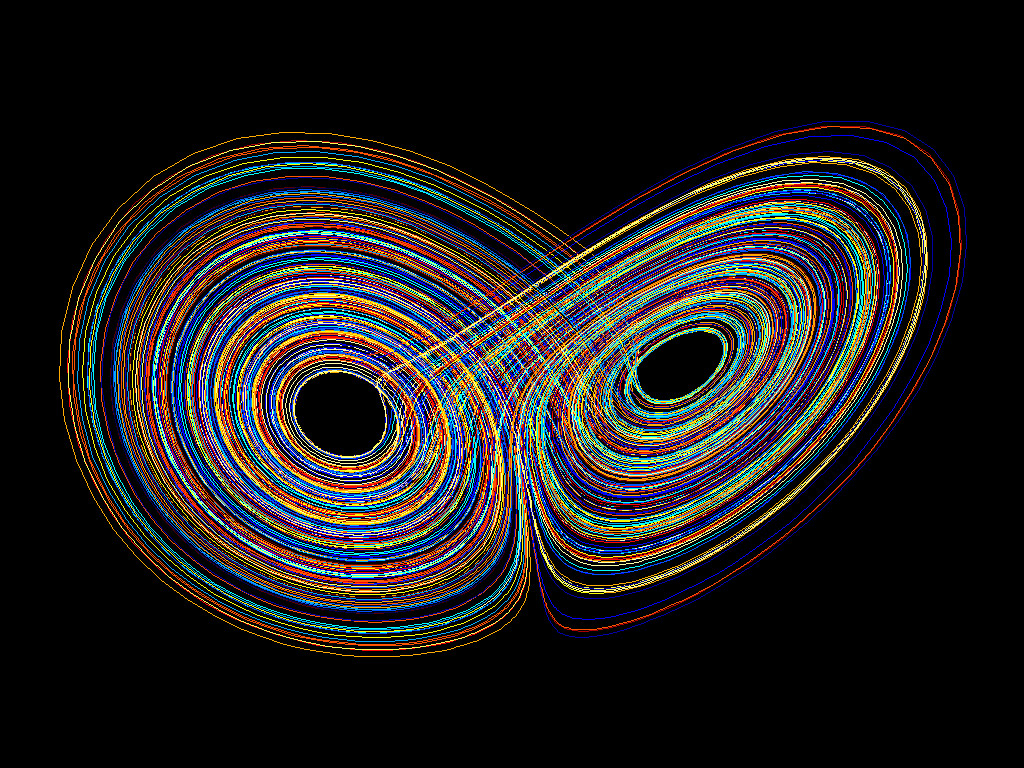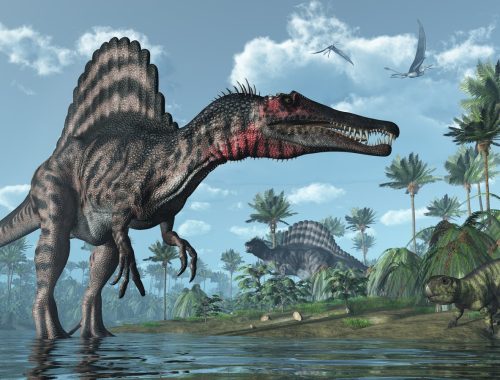
The Butterfly Effect: Small Actions Have Massive Impacts
The world is vast and complex and it may sometimes seem that our small decisions and actions have little to no impact on the big picture. However, if you think about minute details of your life, you may be able to see how a small event was actually the catalyst for a huge change in your life. For example, maybe you bumped into someone at a coffee shop that happens to work at your dream company and eventually got you an interview there. What if you had chosen a different coffee shop, or been there five minutes later? You may not have met the person that got you into your dream job. The idea that something small, like getting coffee, can have much larger effects, such as altering your career is called the butterfly effect.
The butterfly effect rests on the notion that the world is deeply interconnected, such that one small occurrence can influence a much larger complex system. The effect is named after an allegory for chaos theory; it evokes the idea that a small butterfly flapping its wings could, hypothetically, cause a typhoon. Or it could not – the mind-boggling part of the butterfly effect is that it’s virtually impossible to predict whether a small system will lead to chaotic behavior.

History
The earliest utterances relating to the butterfly effect seem to have come from Benjamin Franklin, from the 13th or 14th century. He offered a poetic description of the idea that small things can have significant effects on larger consequences.
However, although ideas similar to the concept may have been circulating for centuries, the butterfly effect was first named by meteorologist and mathematician Edward Lorenz. Lorenz was searching for ways to accurately predict the weather, however, he found that mathematical linear models did not provide accurate predictions. Just as it would be almost impossible to predict that you would land your dream job by deciding to get coffee, Lorenz found that initial weather conditions were not sufficient indicators of future weather conditions.
Lorenz realized that small changes in initial conditions could lead to drastically different effects when he changed an initial atmospheric condition by 0.000127. Such a small, seemingly insignificant change, caused a model to predict very different future weather conditions. He realized that minuscule changes in a starting condition could mean an enormous difference in later events. In 1963, he published a paper with these ideas, titled Deterministic Nonperiodic Flow. In this paper, he essentially argued that weather predictions are inaccurate not only because knowing the precise starting conditions is impossible, but a tiny degree of change also throws off the results.
The paper was scientific and jargon-heavy, which led Lorenz to start using a more palatable concept during interviews: the butterfly effect. He likened his findings to the idea that a butterfly’s wing flapping represents the tiny change in atmospheric condition that would have the potential to alter the trajectory of a typhoon. He stressed that it didn’t necessarily change the course of events, but that it could, and that there was essentially no way of knowing what caused changes in weather. Lorenz, therefore, advocated for deterministic chaos models, that account for the exponential growth of errors.
Consequences
The butterfly is literally all about consequences. It describes how very small things can have great impacts, which means that we can’t just ignore the little things. Even the identification of the butterfly effect had significant impacts on how scientists and economists understood the world.
When Lorenz discussed his findings, it had a significant impact on the way people understood scientific predictions. Up until this point, science had used linear, deterministic models that assumed that it was easy to trace the path between a cause, A and an effect, B.
There was a generally held belief that scientists need not worry about minute details external to the phenomenon that was being studied, because it would have no impact on the relationship between A and B. The butterfly effect demonstrated that causes and effects do not have a purely linear relationship and do not exist independently to other things happening externally, making it difficult to accurately make predictions.

But the butterfly effect has consequences that fall outside of science as well. With its focus on interconnectivity, the butterfly effect also indicates that an individual’s actions can have ramifications on a wider population. Just think about how much a political leader’s actions impact the state of the world. The butterfly effect asks us to be thoughtful with our decisions because we never know what the consequences of those decisions are. It can also be incredibly motivating, as it suggests that our actions DO matter in altering the trajectory of the world, no matter how small they might be. Such information is important when it comes to issues like climate change because people often believe that their individual actions will not have a big enough impact on carbon emissions. The butterfly effect suggests that while a small action, like choosing to use a reusable straw, may not have a linear effect on carbon emissions, but that it could still alter the trajectory of climate change in some way.
Disease in an Interconnected World
COVID-19 is a good example of how a small incident can have a disastrous impact on the entire world. There has been speculation that a pandemic was inevitable, given the interconnected state of our globalized world, where it is impossible to stop something happening in one country to spread to other nations. COVID-19 began in a food market in China and today, has touched almost every single city in the world. A small incident has had non-linear, but massive, impacts on the world and society, with the consequences exacerbated because we are so connected. Additionally, COVID-19 shows how different sectors are all part of a complex system and therefore, how when there is a change in one sector, like health, other sectors like finance, mental health, or the environment are also impacted.
You May Also Like

8 Surprising Facts About the Human Brain
2022-04-20
10 of the Weirdest Dinosaurs Ever Discovered
2023-02-23


